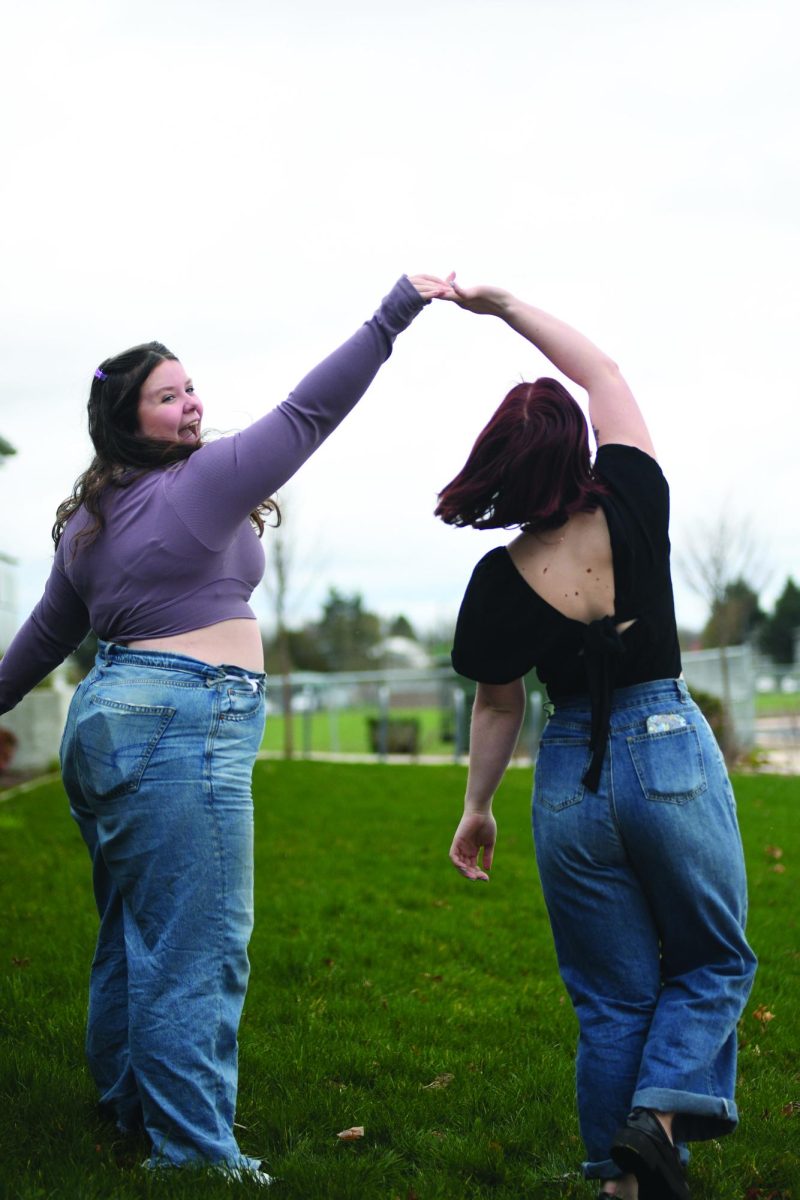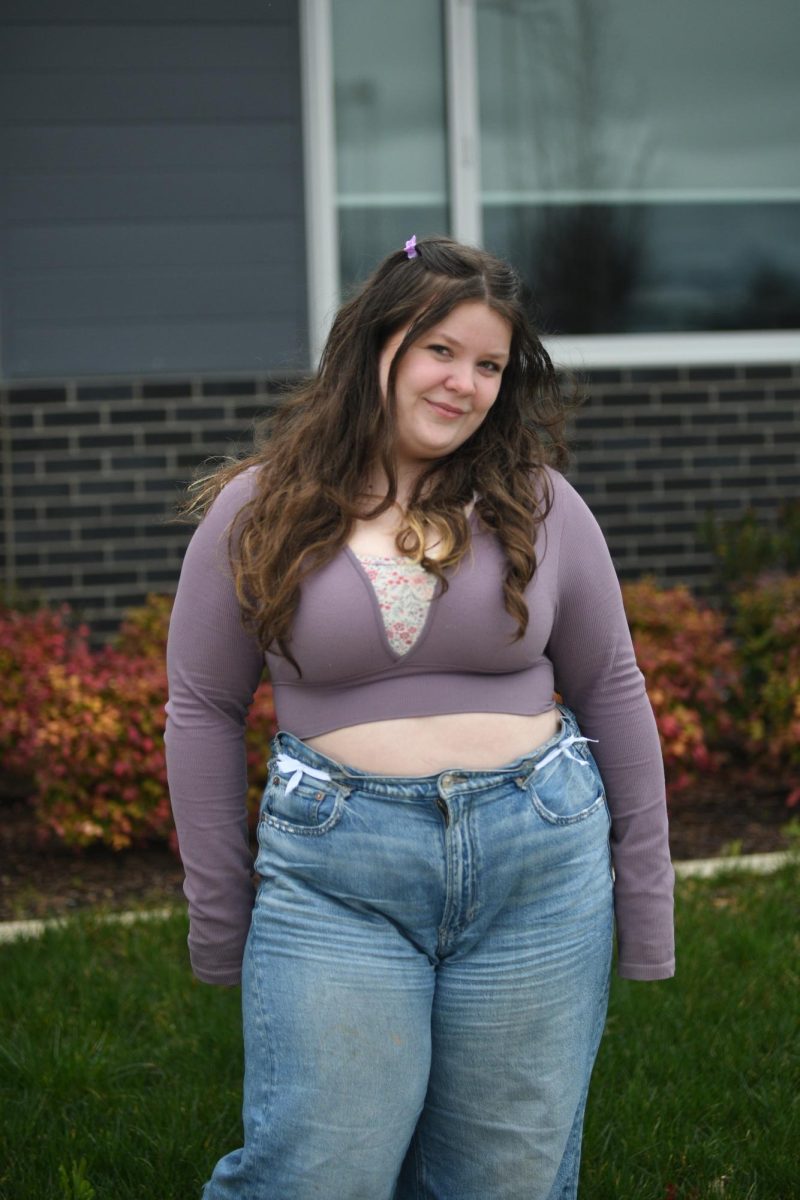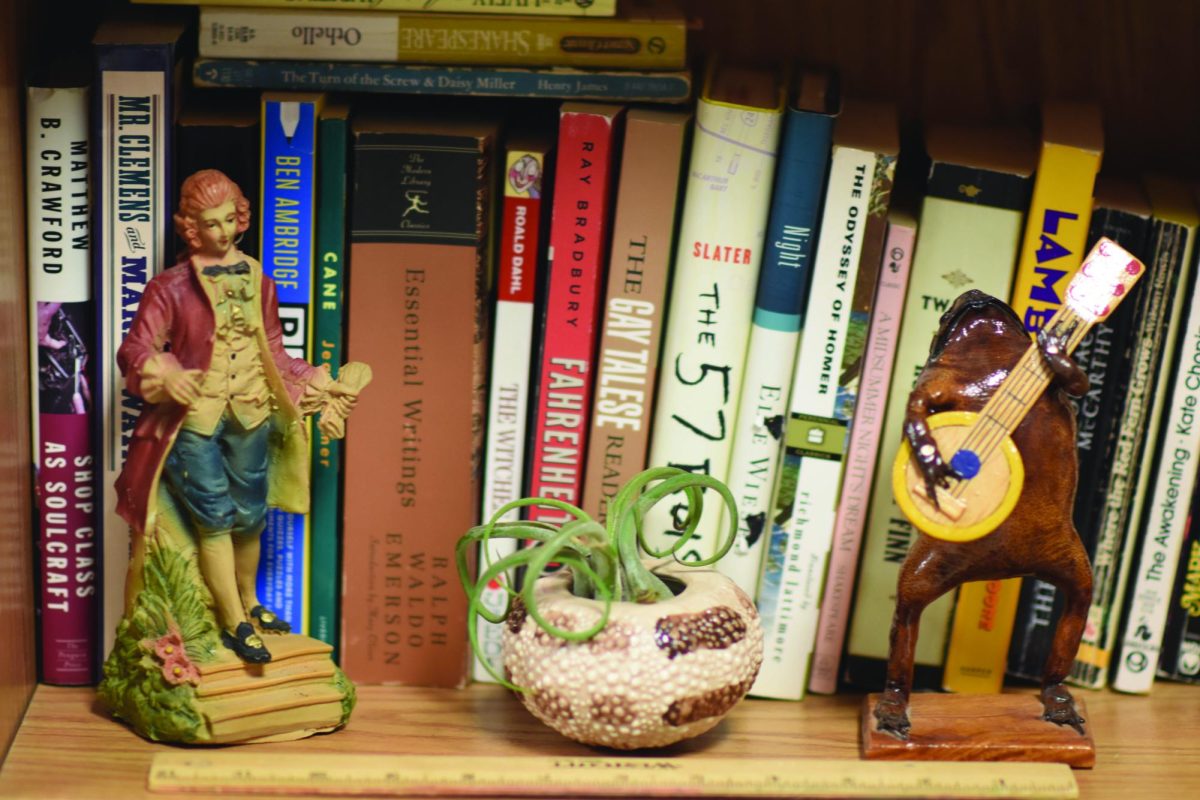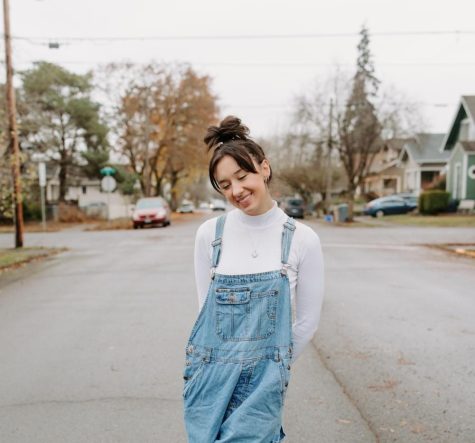It’s lace. It’s pastel colors. It’s pearls. It’s Lana Del Rey’s music. And most importantly, it’s bows. If you use TikTok or know anybody who does, you’re likely familiar with what’s known as the “coquette” trend. Pulling inspiration from celebrity outfits, Victorian-era clothing, Japanese “kawaii” style, and luxury high-fashion designers like Sandy Liang, the viral fashion craze is a culmination of pop culture from around the world throughout recent history. Bows, simple as they may be, have become the staple of the trend, making anything “coquette”— including a bicep, a french fry, or even a cigarette.
The trend has become massively widespread, with #coquette racking up over 14 billion views on tiktok as of december 2023, according to Forbes. The rise of hyper-femininity as a TikTok trend can come as a surprise to some Gen-Z girls due to past trends and internalized perceptions ofon the ways to “appropriately” express themselves as well as their ideas of femininity through fashion. For junior Bethany Olufson, trends are meant to be followed. Inspired by celebrities, online influencers, and her family, she pulls her personal style from the creativity of those around her.
“I really like [singer] Olivia Rodrigo’s style [as well as] my friends’, like [Senior] Noel Mayer, and of course TikTokers online,” said Olufson said.
Senior Hannah Joy likes to use social media to stay updated with current fads, but cares less about implementing them into her outfits .“I like to go to pinterest to keep up with the styles,” said Joy. “[But] I’m going to wear what I want to wear…I really don’t care.”
Like Olufson, Joy looks up to her own celebrity fashion icons. For her, femininity is abstract, something more complex than bows and chunky heels. It’s whatever an individual defines it as, a piece of identity unique to each person and expressed however they see fit. “I feel like women should be able to express their femininity in any sort of way they can,” she said. “I think that really anything can be feminine…if you want to dress like a boy or masculine, do it. Go you.”
However, embracing personal expression isn’t always that simple. Senior Liv Kottre has played tug-of-war with her self expression her whole life, both through fashion and personality. Growing up surrounded predominantly by boys, Kottre and her one female friend felt surrounded by prejudice. According to the American Psychological Association, “in discussions of science and (hyper-)femininity, even potentially positive feminine attributes were denigrated.” And for Kottre, that has been exactly her experience.
“[my friend and I] both felt the internalized misogyny of ‘well you wear dresses, you look girly, so you’re not strong,’” she said. Living in that reality, she felt pressured to dress and present in a more masculine way in order to be seen as an equal to the men around her. ”I used to be a huge tomboy, and I didn’t know that you could wear pants and dresses,” Kottre said. “my style was not what I wanted to wear, but what I thought I had to wear to be taken seriously.”
Olufson feels similarly now, caught between her own self-esteem and the opinions of others based upon her style. “I dress more feminine than the average person,” she said, explaining her average outfits as “comfortable, girly, and trend-following.” Olufson presents as very traditionally feminine, styling her hair to match her outfits and accessorizing with pieces like hair clips, cute tennis shoes, and jewelry. “I do wear dresses and skirts, and that gives me a lot of confidence…[but] I think [people] think I’m not as smart as I am, and they judge my intelligence off of my outfit.”
Kottre shares Olufson’s sentiment, but with a slightly different perspective. For her, the way she feels she’s perceived is based not only on what she’s wearing, but also on the person looking. She finds that those who express gender similarly to her tend to be more forgiving when making first impressions and judge her less. In short, Kottre describes her style as comfortable, sometimes feminine, occasionally unconventional, and emotional in the sense that her outfits change based upon her mood on any given day.
With the rise of the internet and online world, – fads, – like the coquette trend, come and go in a matter of months, sometimes even weeks or days. The biggest online crazes, such as the “clean girl” and “mob wife” aesthetics, are born and left to die on TikTok. With the rapid rise and fall of such trends, Gen Z has changed the norm for the evolution of style. Due to the inaccessibility of some of these fashions, many young people have shaped their personal notions of expression that cannot so easily be tagged by a simple label. Both Kottre and Joy have adapted and come around to their current style through years of trial, error, growth, and exploration.
”In 2020 I really idolized Billie Eilish and her whole message of…I don’t want people to have the option of judging me over my body,” Joy said. “Now I go off of Lana Del Rey mixed with that…I’ve really changed my style after every year of high school,” she noted, describing her current style as “emo or edgy hippie.”
Every individual is bound to explore and change the way they express themselves, through fashion or otherwise. Kottre’s personal journey has been more about breaking loose from those preconceived notions she developed when young than anything else.
“My style has adapted a lot in the past couple years because I’ve looked at myself and been like ‘no, I like to look cute, I like to look frilly, I like to look girly, and that doesn’t make me any less of a woman,” she said. “I can be strong and powerful and be wearing heels and a skirt…there’s no real ‘winning’…just dress how you feel confident.”





